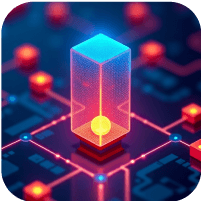
High-Performance Trading Engine
Distributed architecture
Ensures high availability and horizontal scalability. Efficient communication and fault isolation through service grids.
Memory matching
The memory database is used for real-time integration to ensure low latency and high swallow under high concurrency.
Asynchronous processing and event-driven
Asynchronous mode and event-driven architecture to ease the strain on the main thread. Decouple tasks and control traffic through message queues.
Load balancing and cache optimization
Intelligent load balancers distribute requests, and multilevel caches (e.g. Redis, CDN) reduce database access and network latency.

Security Assurance System
End-to-end encryption
The TLS 1.3 protocol is used to encrypt user data, and ECDHE and AES-GCM algorithms are supported to ensure public network transmission security.
Multi-signature and hot/cold wallet
Multiple signatures protect funds, and transfers require multiple layers of system review. A cold/hot wallet policy prevents cyber attacks.
Zero Trust Network
Follow the zero-trust principle and implement strict access control, authentication and authorization. Microsegments and SDP protect internal resources.
Intelligent Risk Control
Real-time risk control systems integrate machine learning to identify unusual transactions, such as DDoS attacks, money laundering, and market manipulation. Threat perception and automatic response are realized through behavior analysis and association rules.

Blockchain Technology Innovation Applications
Cross-chain technology
Based on IBC, HTLC and other protocols, multi-chain assets can be seamlessly traded on THSYU platform.
Layer 2 Scalability
Integrate Optimistic Rollup, ZK-Rollup and other solutions to achieve fast and low-cost Ethereum transactions, ensuring transaction security and transparency through proof of validity and zero-knowledge proof.
DeFi integration
Deep integration of mainstream DeFi protocols, allowing users to one-stop participation in liquidity mining, synthetic asset trading and other DeFi activities.
NFT market and meta support
Build a native NFT trading platform, support ERC-721, ERC-1155 and other standards, provide NFT coin coinage, trading, display, auction, decentralization and other functions, and connect with virtual world, meta-universe projects.

Scalability and Global Deployment
Cloud native architecture
Cloud-native deployment based on Kubernetes, using containerization, service grid, serverless technology to achieve resource resilience and automation.
Global CDN Acceleration
The global CDN network optimizes data transmission with intelligent routing and caching strategies to improve access speed and transaction experience for users around the world.
Multi-regional compliance deployment
Obtain compliance credentials in multiple jurisdictions, comply with data sovereignty and privacy regulations, and enable compliant data storage and cross-border transfer. Comply with GDPR, CCPA and other standards to protect user data privacy.
Global node layout
Establish data centers and edge nodes in global financial markets, and adopt Anycast, BGP and other technologies to achieve on-site access and failover, ensuring that users enjoy low-latency, high-availability transaction services.
Distributed architecture
Ensures high availability and horizontal scalability. Efficient communication and fault isolation through service grids.
Memory matching
The memory database is used for real-time integration to ensure low latency and high swallow under high concurrency.
Asynchronous processing and event-driven
Asynchronous mode and event-driven architecture to ease the strain on the main thread. Decouple tasks and control traffic through message queues.
Load balancing and cache optimization
Intelligent load balancers distribute requests, and multilevel caches (e.g. Redis, CDN) reduce database access and network latency.




